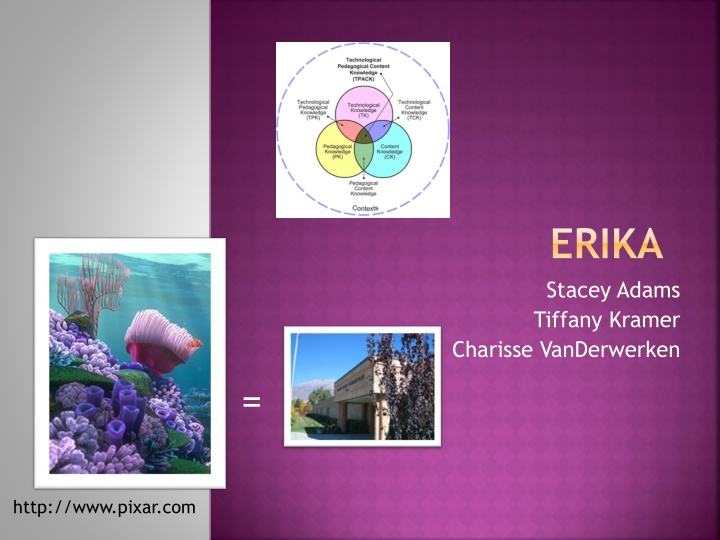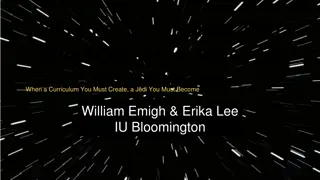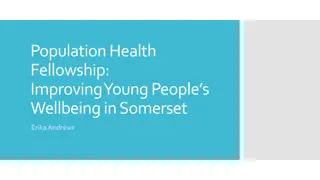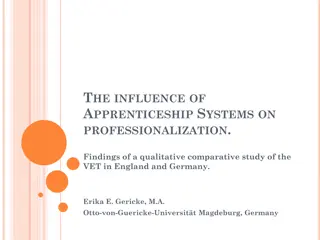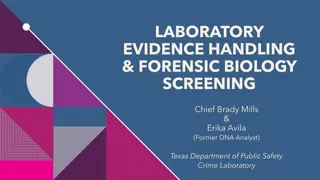ERIKA
ERIKA, a 10-year-old with multiple disabilities, requires a system for effective communication to enhance classroom participation. Utilizing appropriate technologies and pedagogical strategies can significantly improve her interactions with others and overall learning outcomes.
Uploaded on Mar 02, 2025 | 2 Views
Download Presentation

Please find below an Image/Link to download the presentation.
The content on the website is provided AS IS for your information and personal use only. It may not be sold, licensed, or shared on other websites without obtaining consent from the author.If you encounter any issues during the download, it is possible that the publisher has removed the file from their server.
You are allowed to download the files provided on this website for personal or commercial use, subject to the condition that they are used lawfully. All files are the property of their respective owners.
The content on the website is provided AS IS for your information and personal use only. It may not be sold, licensed, or shared on other websites without obtaining consent from the author.
E N D
Presentation Transcript
ERIKA Stacey Adams Tiffany Kramer Charisse VanDerwerken = http://www.pixar.com
ERIKA 10 years old Multiple disabilities (undisclosed) Nonverbal Spanish-speaking home Likes her dolls, blanket, and Froot Loops Prefers to play independently
Learning Needs A system to communicate to obtain needs and wants INQUIRY Connection to Content Proper communication will allow her to be included in the classroom environment Participation and engagement leads to learning **how learning changes when particular technologies are used. Desired Learning Outcomes Appropriate communication (i.e. Verbal or non-verbal, AAC device) Appropriate interaction with others (Example: No hitting) **how subject matter changes by applying different technologies http://www.pixar.com
TECHNOLOGIES INQUIRY SELECTION Bi-lingual Adaptable Visual Auditory Portable Inexpensive **how learning changes when particular technologies are used.
PEDAGOGICAL STRATEGIES INQUIRY MODELING PROMPTS Visual Verbal Physical: Full > Partial > Guided **how teaching changes when particular technologies are used. REINFORCEMENT Receiving the tangible Escape from activity or assignment Verbal praise **teaching knowledge applicable to content. http://www.pixar.com
DATA COLLECTION INQUIRY Baseline Event Recording (without the AAC device) Intervention AAC device Dory I Speak Whale Icons Expected Outcome By using the AAC device Erika s ability to communicate appropriately will be increased **how learning changes when particular technologies are used.
Baseline Data: Event Recording INQUIRY 100.00% Percentage of Appropriate Responses 90.00% 80.00% 75.00% 71.43% 70.00% 60.00% 50.00% 50.00% 40.00% Because she is appropriately responding only 57.5 % of the time, we chose to intervene to increase appropriate communication and interaction with others. 33.33% 30.00% 20.00% 10.00% 0.00% 1 2 3 4 5 6 Session
Measuring SUCCESS INQUIRY NOW: approx. 57.5% accuracy GOAL 65% accuracy - communication with others appropriately with or without the utilization of the AAC device. Examples of Target Behavior Non-examples of Target Behavior Hitting student Turn away Taking object Use AAC device Body facing student Eye contact
ACTIVITIES WITH ERIKA INQUIRY FIRST DAY: TRAINING Introduction to the device Pushing the buttons (with guidance) Demonstrating cause and effects of pushing the buttons with full guidance and a team approach SECOND DAY: 1st day of data collection Circle time THIRD DAY: 2nd day of data collection KNEE SURGERY OT/PT FOURTH DAY: 3rd day of data collection OT/PT
Intervention 120.00% Percentage of Appropriate Responses EVALUATION 100.00% 100.00% 100.00% 80.00% 75.00% 71.43% 60.00% 50.00% 40.00% 33.33% 22.22% 20.00% 0.00% 1 2 3 4 5 6 7 8 Session
Effective Technology Integration EVALUATION 2. The learning activity (participation) is central. 3. Learning (communication) is the focus. 4. The learning activity (participation) is facilitated. 1. Erika actively uses the AAC device. Erika Erika is not perfect at using the device, but ideally, she would be able to participate and communicate appropriately 100 % of the time.
BASIC ASSUMPTIONS BELIEF IN STUDENT - We assumed that Erika could learn how to use the AAC device in the time we had with her PRIMARY LANGUAGE We assumed that she could understand English COGNITIVE ABILITIES we assumed that she could be trained for generalization and maintenance of the device FINE MOTOR SKILLS we assumed that shecould press the buttons on the AAC device ATTENTION SPAN EVALUATION
EVALUATION We wanted to get 65% accuracy which technically we did reach, but we would have like to had move opportunities for Erika to use the device so that we could see if it was successful or not. More observations, we were unable to get more data due to her surgery, and attendance. http://www.pixar.com
GROUP WORK EVALUATION Observing Erika As a group and as individuals Training Erika & Recording data First as a group and then individually Collaboration: then we pooled all our information and experience together. Improvements? http://www.pixar.com
Does the AAC device detract from Erika s learning? Having a variety of devices to find the most suitable device for Erika. EVALUATION For next time: Train Erika on how to use the device, daily, in various settings (classroom, motor room, cafeteria), with different people. One bilingual button, versus two, with one visual icon.
The project has been a great experience and taught us a lot of patience Erika was quite complicated and we had to work really hard to get her to cooperate, which included taking many hits and slaps The AAC device affected our student in a positive way and we felt that it went well. When we saw a small improvement we were very happy In the future we will want to allow more time to work longer with the student to receive more data and to make sure that the device actually worked! REFLECTION
http://www.pixar.com THE END
